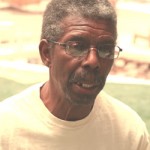Like a lot of people, I was fascinated by the almost complete shutdown of Atlanta from 2.3 inches of snow last week. It was a failure of government to manage a threat to public safety, which cost millions of dollars and some people their lives.
But the actors were not irresponsible people. They thought they were making the best decisions possible at the time.
The interesting aspect for me is how key actors assessed the changing data regarding the storm and the risks it posed. These issues seem analogous to how people assess other kinds of risks, especially the one my colleagues and I are concerned about — wildfire.
The Georgia governor said the weather forecasts showed the storm moving south of the city, even as of Tuesday morning (the day of the storm), so no emergency action was needed. In fact, the National Weather Service forecast had placed the Atlanta area under a storm watch (weather event probable but location and timing uncertain) on Monday, and changed it to a storm warning (hazardous weather imminent) at 3:38 a.m. Tuesday.
In retrospect, it is clear that a state of emergency should have been declared Tuesday morning and schools and offices closed. As it happened, it started as a normal work and school day.
The snow and ice came just after noon. Shortly thereafter everyone was told to go home, unfortunately at the same time, causing a monstrous traffic jam that had many sleeping in their cars overnight.
In the Tuesday night press conference, the governor explained his reluctance to declare an emergency by saying if he had been wrong, a great deal of money would have been lost and he would have been blamed.
I am sure he is right about that. People in Georgia are used to having light snows that soon melt and present no problems to driving. The crucial fact that he and his team missed was that the storm, part of a polar air mass, was unusually cold.
But to say to the people of the metro area that closures were warranted, and that money would be lost based on the analysis of meteorologists, was just too risky in the eyes of many decision-makers, and I am guessing that most of the public agreed with them. The trouble is that they were wrong.
The question raised here is this: Would we rather have our leaders err on the side of public safety (that is to say, close the city and the storm is not bad) or err on the side of protecting business activity (that is to say, keep things open and the storm is very bad and damage is widespread)?
Although it sounds simple and obvious, I think deciding on the basis of public safety (caution) is more difficult in our culture than it seems. If you interfere with business and tax revenue, and inconvenience the public, you had better be right.
We are coming off what appears to be one of the driest years in centuries in California. Challenges loom around both the water supply and the lack of moisture in our surrounding vegetation, both of which have large public health and safety implications.
I hope that when we hear of decisions by public officials that seem overly cautious to us, we will say to ourselves that public health and safety come first. If that is difficult to say, I hope we remember Atlanta.










